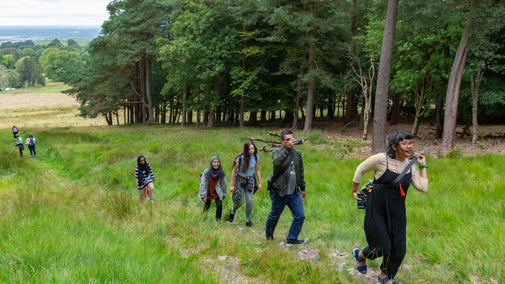Views of Ventnor walking trail
Isle of Wight
Enjoy far-reaching views of the downs and the English Channel, as well as a rich blend of wildlife, on this short but challenging walk on the south side of the Isle of Wight.
Near to
Ventnor DownsStart point
Ventnor Downs car park, grid ref: SZ565784Trail information
More near here
Ventnor Downs prehistory and wartime walk
This short but challenging walk on the south side of the Isle of Wight takes in a Bronze Age burial site and reminders of the island's wartime history.

Get in touch
Our partners

We’ve partnered with Cotswold Outdoor to help everyone make the most of their time outdoors in the places we care for.
You might also be interested in
Ventnor Downs Views of Ventnor walking trail GPX file
Right-click and 'Save Link As' or ‘Save Target As’ or ‘Download Linked File As’ (depending on your browser) to download this Views of Ventnor walking trail GPX file to your device, then open with your GPS program.
Walking
Explore some of the finest landscapes in our care on coastal paths, accessible trails, woodland walks and everything in between. Find the best places to walk near you.

Things to see and do at Ventnor Downs
Explore the chalk hills above the Victorian seaside town of Ventnor for dramatic views, picturesque walks, a chance to spot the local goats, and some historic memorials.

Cotswold Outdoor: our exclusive walking partner
Learn about the National Trust’s ongoing partnership with Cotswold Outdoor. Find out how they help us care for precious places and the exclusive discount available for National Trust supporters.

Staying safe at National Trust places
The special places in National Trust care sometimes come with a few risks for visitors, be it coastline or countryside. Find out how to keep safe throughout your visits.

Follow the Countryside Code
Help to look after National Trust places by observing a few simple guidelines during your visit and following the Countryside Code.

Walking on the Isle of Wight
From discovering dinosaur fossils on a walk at Compton Bay and Downs to the secluded creeks and waterways of Newtown National Nature Reserve, find out where to go for the best walks on the Isle of Wight.




